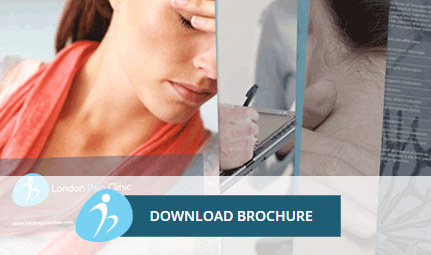As our Pain Doctors regularly explain: “put simply, exercise is good for arthritis. Evidence comes in various levels but there is no doubt that people with arthritis can experience improvements in their condition & overall well-being by participating in regular, appropriate exercise. Osteoarthritis & rheumatoid arthritis can both be extremely debilitating with pain & physical dysfunction leading to significant loss of quality of life, with patients reporting pain, difficulty with daily living, sleep problems & fatigue” [1]
Here at the London Pain Clinic, countless patients present with a broad spectrum of physical impairments linked to joint pain. These include:
- Stiff joints
- Weak muscles
- Altered proprioception (a disturbance in our body’s ability to sense its position and movement within space)
- Reduced balance
- Gait abnormalities [2]
Moreover, in addition to the aforementioned, and inline with scientific studies, our Pain Specialists find that psychological impairments including anxiety and depression are commonplace among patients with chronic joint pain [2].
Getting Back to Optimal Health
Once new patients have an online or in-person consultation with one of our world-class Pain Consultants, as soon as they have received an accurate diagnosis, their Pain Doctor will draw up a Holistic Personalised Treatment Plan. This may include multiple conventional and cutting-edge treatments, therapies and injectables (including pain blockers and Botox), as well as lifestyle recommendations such as taking up pilates and yoga.
Two Key Health Benefits of Yoga & Pilates
“Posture, strength & joint pain – consistent yoga & pilates practice improves our body’s posture. Good posture helps to prevent back pain, muscle aches & other pain. Pilates focuses on strengthening our core muscles which help to protect against injuries. Injury recovery – pilates has a strong emphasis on repeating moves that correct our posture & align our body. This attention to the correct technique helps muscle weakness” [2]
Yoga is a physical exercise and well-being practice that has its roots in ancient India. Its prime goals are to:
- Build the body’s flexibility and strength through the practice of different poses (asanas)
- Promote relaxed breathing techniques, meditation and mindfulness
Of note, a yoga session encompasses a complete body workout. This is geared to the fitness level of the participant (including beginners), and there is no requirement to do any advanced movements. It is very important to seek out a certified yoga practitioner. One of the most practiced basic styles is Hatha yoga A floor mat is essential [2].
Pilates refers to a type of exercise that incorporates a series of repetitive body movements. The latter are designed to:
- Help improve posture
- Boost flexibility
- Improve balance, and
- Bolster muscular strength [2]
Of note, only qualified instructors are recommended. Moreover, they are able to provide participants with an easy Pilates program to suit their specific needs and fitness level. Pilates can be undertaken on a mat using one’s own body weight and various props [2].
Key Factors Related to Yoga & Pilates
- Yoga interweaves physical movement with gentle breathing and meditation techniques
- Pilates incorporates a series of repetitive body movements, and employs a breathing technique to boost coordination and optimum movement
- By practising pilates and/or yoga on a regular basis, patients with joint pain can ameliorate their muscular strength, flexibility and balance. Moreover, when this is coupled with a Holistic Personalised Treatment Plan, results can be optimised. (Your Pain Doctor will discuss exercise with you on your post-diagnosis consultation)
- You are only advised to take classes with a certified instructor. That way, you will be shown the correct movements for you age and condition, and thus avoid injury [2]. Always inform your instructor if you are recovering from an injury, have restricted movement, pain, or are pregnant, etc.
References
[1]. Arthritis Australia (2023). “Arthritis and Exercise: The Essentials.”
[2]. Direct Health Australia (2025). “Health Benefits of Yoga and Pilates.”
https://www.healthdirect.gov.au/health-benefits-of-yoga-and-pilates



